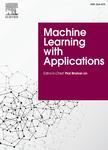版权所有:内蒙古大学图书馆 技术提供:维普资讯• 智图
内蒙古自治区呼和浩特市赛罕区大学西街235号 邮编: 010021

作者机构:Toronto Metropolitan Univ Dept Mech Ind & Mechatron Engn Toronto ON Canada
出 版 物:《MACHINE LEARNING WITH APPLICATIONS》 (Mach. Learn. Appl.)
年 卷 期:2025年第19卷
核心收录:
基 金:Department of Mechanical Industrial and Mechatronics Engineering Faculty of Engineering and Architectural Science Toronto Metropolitan University
主 题:Supplier selection Order allocation Machine learning Multi-objective programming Purchasing Optimization
摘 要:Selection of appropriate suppliers and allocation the orders among them have become the two key strategic decisions regarding purchasing. In this study, a two-phase integrated approach is proposed for solving supplier selection and order allocation problems. Phase 1 contains four techniques from statistics and Machine Learning (ML), including Auto-Regressive Integrated Moving Average, Random Forest, Gradient Boosting Regression, and Long Short-term Memory for forecasting the demands, using large amounts of real historical data. In Phase 2, suppliers qualitative weights are determined by a fuzzy logic model. Then, a new multi-objective programming model is designed, considering multiple periods and products. In this phase, the results of Phase 1 and the results of the fuzzy model are utilized as inputs for the multi-objective model. The weighted-sum method is applied for solving the multi-objective model. The results show Random Forest model leads to more accurate predictions than the other examined models in this study. In addition, based on the results, the selection of the forecasting techniques and different weights of suppliers affect both supplier selection and the related orders.